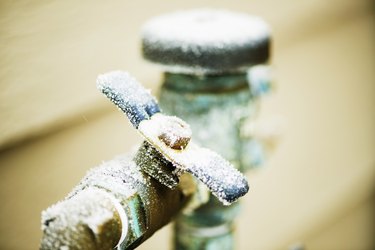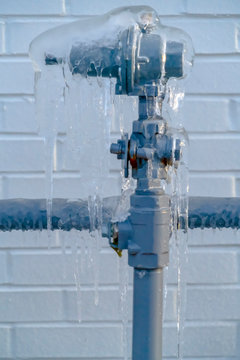Essential Tips to Prevent Frozen Plumbing in Winter
Essential Tips to Prevent Frozen Plumbing in Winter
Blog Article
We have discovered this post relating to How to prepare your home plumbing for winter weather down the page on the net and decided it made perfect sense to write about it with you on my blog.

Winter can wreak havoc on your pipes, particularly by freezing pipelines. Below's just how to stop it from happening and what to do if it does.
Introduction
As temperature levels decline, the risk of frozen pipelines boosts, potentially resulting in expensive fixings and water damage. Understanding just how to stop frozen pipelines is critical for home owners in cool environments.
Prevention Tips
Shielding at risk pipes
Wrap pipelines in insulation sleeves or make use of heat tape to safeguard them from freezing temperature levels. Concentrate on pipelines in unheated or exterior locations of the home.
Heating techniques
Keep interior rooms appropriately heated up, specifically areas with pipes. Open cabinet doors to enable warm air to distribute around pipelines under sinks.
Just how to recognize frozen pipelines
Search for lowered water circulation from taps, unusual smells or noises from pipelines, and visible frost on exposed pipes.
Long-Term Solutions
Architectural adjustments
Take into consideration rerouting pipelines away from outside walls or unheated locations. Add additional insulation to attic rooms, cellars, and crawl spaces.
Updating insulation
Invest in top notch insulation for pipelines, attics, and walls. Proper insulation aids keep regular temperatures and reduces the danger of frozen pipelines.
Securing Outdoor Pipes
Garden tubes and outdoor taps
Disconnect and drain yard hose pipes prior to winter season. Install frost-proof faucets or cover exterior faucets with insulated caps.
Comprehending Icy Pipes
What causes pipes to freeze?
Pipelines freeze when subjected to temperatures listed below 32 ° F (0 ° C) for expanded durations. As water inside the pipelines ices up, it broadens, putting pressure on the pipeline wall surfaces and possibly creating them to burst.
Risks and damages
Frozen pipes can result in supply of water interruptions, residential or commercial property damages, and costly repair work. Ruptured pipelines can flood homes and create extensive architectural damage.
Signs of Frozen Pipes
Recognizing icy pipes early can stop them from rupturing.
What to Do If Your Pipelines Freeze
Immediate activities to take
If you presume frozen pipelines, maintain taps available to relieve stress as the ice melts. Use a hairdryer or towels taken in warm water to thaw pipelines gradually.
Conclusion
Protecting against frozen pipes needs positive measures and quick actions. By understanding the causes, indications, and safety nets, homeowners can secure their plumbing during winter.
5 Ways to Prevent Frozen Pipes
Drain Outdoor Faucets and Disconnect Hoses
First, close the shut-off valve that controls the flow of water in the pipe to your outdoor faucet. Then, head outside to disconnect and drain your hose and open the outdoor faucet to allow the water to completely drain out of the line. Turn off the faucet when done. Finally, head back to the shut-off valve and drain the remaining water inside the pipe into a bucket or container. Additionally, if you have a home irrigation system, you should consider hiring an expert to clear the system of water each year.
Insulate Pipes
One of the best and most cost-effective methods for preventing frozen water pipes is to wrap your pipes with insulation. This is especially important for areas in your home that aren’t exposed to heat, such as an attic. We suggest using foam sleeves, which can typically be found at your local hardware store.
Keep Heat Running at 65
Your pipes are located inside your walls, and the temperature there is much colder than the rest of the house. To prevent your pipes from freezing, The Insurance Information Institute suggests that you keep your home heated to at least 65 degrees, even when traveling. You may want to invest in smart devices that can keep an eye on the temperature in your home while you’re away.
Leave Water Dripping
Moving water — even a small trickle — can prevent ice from forming inside your pipes. When freezing temps are imminent, start a drip of water from all faucets that serve exposed pipes. Leaving a few faucets running will also help relieve pressure inside the pipes and help prevent a rupture if the water inside freezes.
Open Cupboard Doors
Warm your kitchen and bathroom pipes by opening cupboards and vanities. You should also leave your interior doors ajar to help warm air circulate evenly throughout your home.

I'm very excited about Prevent Frozen Pipes and I'm hoping you appreciated the entire article. Kindly take the opportunity to share this entry if you enjoyed reading it. Bless you for your time. Kindly come visit our site back soon.
Contact Us Now Report this page